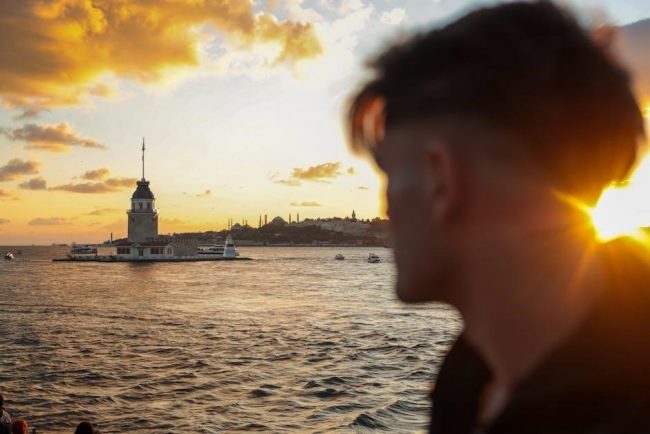Haroun and the Sea of Stories is a captivating children’s novel by Salman Rushdie‚ blending magic realism with profound allegory. Written during Rushdie’s hiding‚ it explores the power of storytelling through Haroun’s quest to restore the poisoned Sea of Stories‚ a vibrant tapestry of imagination and cultural richness.
1.1 Overview of the Novel
Haroun and the Sea of Stories is a vibrant children’s fantasy novel by Salman Rushdie‚ set in the exotic landscape of Alifbay. The story follows Haroun Khalifa‚ a young boy whose father‚ Rashid‚ is a master storyteller known as the Shah of Blah. When the Sea of Stories‚ the source of all narratives‚ is poisoned‚ Haroun embarks on a magical journey to restore it. With the help of fantastical creatures and allies‚ he battles the dark forces of the Chupwalas‚ exploring themes of imagination‚ freedom‚ and the power of storytelling in a world filled with wonder and danger.
1.2 Importance of the PDF Version
The PDF version of Haroun and the Sea of Stories offers a convenient and accessible way to engage with Salman Rushdie’s timeless tale. It preserves the original text’s integrity‚ allowing readers to experience the vivid imagery and magical storytelling in a digital format. The PDF is widely available‚ making it easier for global audiences to discover this allegorical masterpiece. Its digital accessibility ensures that Rushdie’s advocacy for free expression and the power of stories reaches new generations‚ maintaining the novel’s enduring relevance and charm.

The Author: Salman Rushdie
Salman Rushdie‚ a renowned author‚ wrote Haroun and the Sea of Stories during his time in hiding‚ crafting a magical tale to reconnect with his son and celebrate storytelling’s power.
2.1 Biography of Salman Rushdie
Salman Rushdie‚ a celebrated author‚ was born in Bombay in 1947. Educated in England‚ he gained acclaim for his magical realism and cultural blends. During hiding‚ he wrote Haroun and the Sea of Stories‚ his first children’s novel‚ to connect with his son Zafar. This work showcases his storytelling prowess and advocacy for free expression‚ reflecting his unique literary style and commitment to cultural narratives.
2.2 Rushdie’s Writing Style
Salman Rushdie’s writing style in Haroun and the Sea of Stories is a blend of magical realism‚ humor‚ and satire. His use of vivid imagery and intricate storytelling creates a rich‚ layered narrative. The novel’s allegorical depth and playful language reflect Rushdie’s signature style‚ which often explores cultural and philosophical themes. The PDF version highlights his linguistic brilliance‚ offering readers a clear and accessible way to experience his imaginative world‚ where fantasy and reality intertwine seamlessly.
2.3 Historical Context of the Novel
Haroun and the Sea of Stories was written by Salman Rushdie in 1990‚ during a tumultuous period in his life. The novel was composed while Rushdie was in hiding due to the fatwa issued against him‚ adding a layer of personal and political significance. This context influenced the story’s themes of free speech and resistance against oppression. The PDF version of the novel highlights Rushdie’s unique ability to weave contemporary issues into a timeless fairy tale‚ blending magic with reality. The book became a powerful allegory for the struggle against censorship and the enduring power of storytelling.

Plot Summary
Haroun and the Sea of Stories follows Haroun Khalifa‚ a young boy‚ as he embarks on a quest to save his father‚ Rashid‚ and the magical Sea of Stories from destruction. The story unfolds in a fantastical world where stories are the lifeblood of culture‚ and their loss threatens existence. Haroun’s journey reveals a battle between forces of creativity and darkness‚ with magical creatures and challenges shaping his destiny.
3.1 The Sad City and the Khalifa Family
The story begins in a nameless‚ sorrowfully sad city where the Khalifa family resides. Rashid‚ a renowned storyteller known as the Shah of Blah‚ lives with his wife‚ Soraya‚ and their son‚ Haroun. The city’s despair is mirrored in the family’s struggles‚ particularly when Rashid loses his storytelling gift‚ plunging Haroun into a journey to restore his father’s abilities and the magical Sea of Stories. This setting sets the stage for a fantastical adventure exploring the power of imagination and narrative.
3.2 Haroun’s Quest to Restore the Sea of Stories
Driven by his father’s loss of storytelling ability‚ Haroun embarks on a magical journey to restore the poisoned Sea of Stories. Aided by a talking mail coach‚ he ventures into fantastical realms‚ encountering mystical creatures and challenges. The quest not only aims to revive the source of all narratives but also to save his father’s gift and the world from the forces of darkness. This adventure explores themes of imagination‚ courage‚ and the enduring power of storytelling.
3.3 The Battle Between Guppees and Chupwalas
The Guppees and Chupwalas embody the struggle between light and darkness‚ with the Guppees representing storytelling‚ hope‚ and freedom‚ while the Chupwalas symbolize silence‚ oppression‚ and darkness. Haroun’s quest intersects with this eternal conflict‚ as the Chupwalas seek to poison the Sea of Stories‚ silencing creativity and imagination. The battle highlights the novel’s central theme of freedom of expression and the enduring power of stories to overcome evil‚ making it a pivotal moment in Haroun’s journey.
3.4 The Role of Rashid‚ the Shah of Blah
Rashid‚ the Shah of Blah‚ is a master storyteller whose tales captivate audiences‚ earning him reverence. His son Haroun admires his father’s gift‚ but Rashid’s storytelling ability fades‚ prompting Haroun’s quest to restore it. Rashid’s journey alongside Haroun symbolizes the bond between father and son‚ blending personal and universal themes. His character represents the power of storytelling and the struggle to preserve imagination‚ making him central to the narrative’s emotional and thematic depth.

Themes and Motifs
Haroun and the Sea of Stories explores themes of storytelling‚ imagination‚ and the battle between good and evil‚ weaving magic realism with cultural and mythological influences.
4.1 The Power of Storytelling
The Power of Storytelling in Haroun and the Sea of Stories is a central theme‚ highlighting storytelling as a source of identity‚ culture‚ and imagination. Rashid‚ the Shah of Blah‚ embodies this power‚ while Haroun’s journey symbolizes the struggle to preserve it. The novel underscores storytelling’s role in connecting people‚ fostering creativity‚ and combating darkness‚ emphasizing its universal importance in shaping human experiences and maintaining cultural heritage.
4.2 Freedom of Expression
Freedom of Expression is a pivotal theme in Haroun and the Sea of Stories‚ as Rushdie uses the narrative to advocate for the importance of free speech. The novel portrays storytelling as a powerful tool for expression‚ while the oppressive forces of the Guppees symbolize censorship and suppression. Through Haroun’s journey‚ Rushdie emphasizes the universal importance of articulating ideas and resisting oppressive forces that seek to silence creativity and dissent‚ reflecting his own experiences and broader societal challenges;
4.3 The Struggle Between Good and Evil
The Struggle Between Good and Evil is a central theme in Haroun and the Sea of Stories‚ portrayed through the battle between light and darkness. Haroun and his allies‚ including the Guppees‚ represent the forces of good‚ fighting to preserve imagination and freedom. The Chupwalas‚ embodying evil‚ seek to silence stories and spread darkness. This conflict mirrors real-world struggles against oppression‚ highlighting the importance of resilience and the enduring power of goodness in the face of adversity.
4.4 Cultural and Mythological Influences
Cultural and Mythological Influences are deeply woven into Haroun and the Sea of Stories‚ reflecting Rushdie’s diverse inspirations. The novel blends Eastern mythologies‚ such as the magical landscapes of Alifbay‚ with Western influences like The Wizard of Oz. Talking animals‚ magicians‚ and fantastical creatures enrich the narrative‚ drawing from both Islamic and Hindu mythologies. These elements create a vibrant‚ universal tale that celebrates storytelling’s power to bridge cultures and transcend boundaries‚ offering a rich tapestry of shared human experiences.

Key Characters
Haroun and the Sea of Stories features a cast of memorable characters‚ including the young protagonist Haroun Khalifa‚ his father Rashid Khalifa (the Shah of Blah)‚ Soraya Khalifa‚ and the opposing forces of Guppees and Chupwalas.
5.1 Haroun Khalifa: The Protagonist
Haroun Khalifa‚ a curious and brave 12-year-old boy‚ embarks on a quest to restore the Sea of Stories and save his father‚ Rashid. Facing challenges like the evil Guppees‚ Haroun’s determination highlights his growth from a questioning child to a hero. His journey explores themes of identity‚ family‚ and imagination‚ showcasing his emotional depth. The PDF version vividly captures Haroun’s adventures‚ making his character relatable and inspiring‚ as he learns the power of storytelling and its impact on the world.
5.2 Rashid Khalifa: The Shah of Blah
Rashid Khalifa‚ known as the Shah of Blah‚ is a master storyteller whose inability to weave tales sparks the novel’s central conflict. His loss of storytelling power drives Haroun’s quest to restore the Sea of Stories. As a father‚ Rashid’s bond with Haroun is central‚ showcasing his wisdom and creativity. The PDF version beautifully illustrates his character‚ emphasizing his role as a symbol of imagination and the importance of preserving cultural narratives through storytelling.
5.3 Soraya Khalifa: Haroun’s Mother
Soraya Khalifa‚ Haroun’s mother‚ plays a pivotal yet subtle role in the novel. Her quiet strength and unwavering support for her family provide emotional stability amidst chaos. The PDF version highlights her resilience as she navigates the challenges of her husband’s lost storytelling gift and her son’s perilous journey. Soraya’s character embodies maternal devotion and the unspoken heroism of ordinary individuals‚ making her an integral part of the story’s emotional landscape.
5.4 The Guppees and Chupwalas: Antagonists
The Guppees and Chupwalas are central antagonists in the novel‚ embodying the struggle between light and darkness. The Guppees‚ peaceful storytellers‚ represent creativity and freedom‚ while the Chupwalas‚ dark forces‚ seek to silence stories. Their conflict drives the plot‚ with the Chupwalas poisoning the Sea of Stories‚ symbolizing the suppression of imagination. This duality highlights Rushdie’s exploration of good vs. evil and the importance of preserving narrative in a world threatened by oppression.

Symbolism in the Novel
The novel is rich in symbolism‚ with the Sea of Stories representing imagination and creativity‚ while the Mail Coach symbolizes the journey of storytelling and self-discovery.
6.1 The Sea of Stories as a Symbol of Imagination
The Sea of Stories signifies the boundless ocean of imagination‚ where tales flow endlessly. Its poisoning mirrors the stifling of creativity‚ while Haroun’s quest to restore it underscores the power of storytelling to revive imagination and cultural identity. This symbol is central to Rushdie’s exploration of creativity and freedom of expression‚ reflecting the novel’s deeper themes of preserving artistic voice and cultural heritage in a world threatened by oppressive forces.
6.2 The Poisoning of the Sea: Loss of Creativity
The poisoning of the Sea of Stories symbolizes the erosion of creativity and imagination. As the stories lose their flavor and color‚ the world of Alifbay suffers‚ reflecting the stifling of artistic expression. This blight mirrors real-world suppression of creativity‚ where freedom of speech is threatened. The poisoned sea disrupts the lives of characters like Rashid‚ the storyteller‚ and his son Haroun‚ who must embark on a quest to restore it. The novel highlights the importance of preserving imagination and the consequences of its loss.
6.3 The Mail Coach as a Symbol of Journey
The Mail Coach in Haroun and the Sea of Stories serves as a symbol of Haroun’s transformative journey. It transports him across magical landscapes‚ such as the Dull Lake and the Valley of K‚ representing the passage from despair to hope. The coach‚ with its vibrant colors and rhythmic motion‚ embodies the dynamic nature of storytelling and the interconnectedness of worlds. It becomes a vessel for Haroun’s growth‚ highlighting the power of travel and exploration in restoring creativity and understanding the true essence of stories.

Reception and Reviews
Critics praised Haroun and the Sea of Stories for its enchanting narrative and imaginative storytelling‚ solidifying its place in children’s literature with timeless appeal.
7.1 Critical Acclaim
Haroun and the Sea of Stories received widespread critical acclaim for its vivid imagery‚ magical realism‚ and rich storytelling. Reviewers praised Rushdie’s ability to craft a tale that resonates with both children and adults‚ blending humor‚ satire‚ and profound themes. The novel’s imaginative world‚ inspired by Eastern mythology‚ was particularly highlighted‚ as was its advocacy for free expression. The PDF version of the book further enhanced its accessibility‚ allowing readers to engage with its timeless narrative in a modern format.
7.2 Audience Reception
Haroun and the Sea of Stories captivated readers worldwide‚ charming both children and adults with its enchanting narrative. The PDF version enhanced accessibility‚ allowing a broader audience to enjoy Rushdie’s magical world. Readers praised the story’s universal appeal‚ blending humor‚ adventure‚ and deeper themes like freedom of expression. Its imaginative storytelling resonated deeply‚ making it a beloved read across generations and cementing its place as a modern classic in children’s literature.
7.3 Comparisons with Other Works
Haroun and the Sea of Stories is often compared to classic fantasy tales like The Lord of the Rings‚ The Alchemist‚ and The Wizard of Oz‚ sharing similar imaginative landscapes and quests. However‚ Rushdie’s unique blend of Eastern mythology‚ magic realism‚ and cultural richness sets it apart. The novel’s allegorical depth and advocacy for free speech resonate with themes in Rushdie’s other works‚ like Midnight’s Children‚ while its whimsical storytelling appeals to fans of timeless fairy tales and adventures.

The PDF Version
The PDF version of Haroun and the Sea of Stories is widely available for download‚ offering a convenient digital format for readers to access this enchanting tale seamlessly.
8.1 Availability of the PDF
The PDF version of Haroun and the Sea of Stories is readily available on platforms like Scribd‚ e-libraries‚ and various online repositories. Readers can easily download or stream the book in digital formats‚ making it accessible worldwide. Published in 1991 by Granta Books‚ the PDF includes the complete narrative‚ ensuring fans of Salman Rushdie can enjoy this enchanting tale. Its availability has made it a popular choice for both casual readers and academic purposes‚ further cementing its reach and impact globally.
8.2 Advantages of the Digital Format
The digital format of Haroun and the Sea of Stories offers numerous benefits. It enables instant access‚ allowing readers to enjoy the book anytime‚ anywhere. The PDF version is lightweight‚ making it easy to store on devices. Additionally‚ digital formats often include features like search‚ bookmarks‚ and adjustable fonts‚ enhancing readability. This accessibility has made it a preferred choice for modern readers‚ ensuring Salman Rushdie’s timeless tale reaches a broader audience while preserving its rich storytelling and cultural essence for future generations.
8.3 Illustrations in the PDF
The PDF version of Haroun and the Sea of Stories features enchanting illustrations by Paul Birkbeck‚ enhancing the magical narrative. These visuals bring the fantastical world of Alifbay to life‚ with vibrant depictions of characters like Haroun‚ Rashid‚ and the Guppees. The illustrations add depth to the storytelling‚ making the digital format a visually engaging experience. They complement Rushdie’s prose‚ offering readers a richer connection to the imaginative landscape and cultural elements woven into the story‚ ensuring the book’s artistry shines in its digital form.
Cultural Significance
Haroun and the Sea of Stories blends Eastern and Western influences‚ advocating for free expression and celebrating cultural diversity. Its magical realism resonates globally‚ making it a timeless tale.
9.1 Influence on Children’s Literature
Haroun and the Sea of Stories has profoundly influenced children’s literature by introducing magic realism to younger audiences. Its accessible blend of humor‚ satire‚ and fantasy has made complex themes engaging for children. The novel’s celebration of storytelling and advocacy for free speech resonates deeply‚ inspiring a new wave of imaginative and culturally rich narratives in children’s books. Rushdie’s unique style bridges Eastern and Western traditions‚ creating a timeless tale that fosters creativity and critical thinking in young readers worldwide.
9.2 Representation of Eastern Culture
Haroun and the Sea of Stories vividly represents Eastern culture through its richly imagined landscape‚ blending elements of Indian and Middle Eastern mythologies. The novel draws inspiration from oral traditions‚ folklore‚ and cultural symbols‚ creating a vibrant tapestry of Eastern heritage. Rushdie’s use of magicians‚ talking animals‚ and exotic settings reflects the diversity and richness of Eastern storytelling traditions‚ preserving and celebrating these cultural elements for a global audience while maintaining their unique authenticity and charm.
9.3 Advocacy for Free Speech
Haroun and the Sea of Stories serves as a powerful allegory for the importance of free speech and creative expression. Through the struggle to restore the Sea of Stories‚ Rushdie highlights the dangers of censorship and the suppression of ideas. The novel champions the freedom to tell and share stories‚ reflecting Rushdie’s own experiences and broader societal issues. It emphasizes that stories are the lifeblood of culture and that their suppression threatens individual and collective identity‚ making it a timeless advocate for intellectual liberty and artistic freedom.

Adaptations and Related Works
The novel has inspired a stage adaptation and influenced other authors‚ showcasing its enduring appeal. Rushdie’s unique storytelling style continues to captivate audiences‚ making it a timeless classic in children’s literature.
10.1 Stage Adaptations
Haroun and the Sea of Stories has been adapted into a dynamic stage production‚ directed by Jennifer Adams. The play captures the novel’s magical essence‚ featuring a talented ensemble that brings Haroun’s journey to life. With vibrant costumes and imaginative staging‚ it delights audiences‚ offering a theatrical experience that echoes the book’s themes of storytelling and freedom. This adaptation showcases Rushdie’s narrative brilliance‚ translating the fantastical world of Alifbay into a captivating live performance.
10.2 Similar Works by Salman Rushdie
Salman Rushdie’s Midnight’s Children and The Satanic Verses share similar themes of magic realism and cultural identity. Like Haroun‚ these works blend fantasy with political allegory‚ exploring freedom of expression. Midnight’s Children‚ featuring a child protagonist with extraordinary abilities‚ mirrors Haroun’s magical journey. The Satanic Verses delves into identity and storytelling‚ echoing the Sea of Stories’ symbolism. Both novels reflect Rushdie’s signature style‚ weaving intricate narratives that challenge societal norms and celebrate the power of storytelling.
10.3 Influence on Other Authors
Haroun and the Sea of Stories has inspired many authors with its magical realism and rich storytelling. Rushdie’s ability to weave cultural mythology into modern narratives has influenced writers like Neil Gaiman and Jhumpa Lahiri. The novel’s emphasis on imagination and freedom of expression has encouraged authors to explore similar themes in their work. Its vivid imagery and allegorical depth have set a benchmark for blending fantasy with social commentary‚ making it a cornerstone of contemporary literary influence.

Writing Style and Linguistic Elements
Salman Rushdie’s writing in Haroun and the Sea of Stories blends magic realism with humor‚ satire‚ and rich imagery‚ creating a vibrant narrative that captivates readers of all ages.
11.1 Magic Realism in Haroun
Haroun and the Sea of Stories showcases Salman Rushdie’s mastery of magic realism‚ blending fantastical elements like talking animals and magical lands with realistic emotional depth. The novel’s vivid imagery‚ such as the Sea of Stories and the exotic Eastern landscape‚ creates a captivating narrative. Rushdie’s unique style weaves mythology‚ humor‚ and societal critique seamlessly‚ immersing readers in a world where the magical and mundane coexist. This approach enhances the story’s emotional resonance and intellectual depth‚ making it a timeless tale for readers of all ages.
11.2 Use of Humor and Satire
Haroun and the Sea of Stories employs humor and satire to critique societal norms and political issues. Rushdie’s witty dialogue and exaggerated characters‚ like the comically villainous Guppees‚ add a layer of entertainment. Satirical elements‚ such as the mocking of censorship and oppression‚ are presented through fantastical scenarios‚ making complex themes accessible. This blend of humor and satire not only engages younger readers but also offers deeper reflections for adults‚ showcasing Rushdie’s skill in balancing levity with profound commentary.
11.3 Rich Imagery and Descriptions
Haroun and the Sea of Stories is renowned for its vivid and elaborate imagery‚ transporting readers to an enchanting Eastern-inspired world. Rushdie’s descriptions of the sad city‚ the magical Sea of Stories‚ and fantastical creatures like talking animals are richly detailed‚ creating a visually immersive experience. The vibrant portrayal of settings and characters enhances the narrative’s magical realism‚ drawing readers into Haroun’s captivating journey while emphasizing the novel’s themes of imagination and cultural heritage.
Haroun and the Sea of Stories is a timeless tale celebrating storytelling‚ imagination‚ and free expression. Its blend of fantasy and reality leaves a lasting impact on readers of all ages.
12.1 Final Thoughts on the Novel
Haroun and the Sea of Stories is a mesmerizing blend of fantasy and reality‚ offering timeless lessons on storytelling‚ freedom‚ and imagination. Rushdie’s masterful crafting creates a vivid world where stories are the lifeblood of culture. The novel’s universal themes resonate deeply‚ making it a cherished work for readers of all ages. Its rich imagery and allegorical depth ensure that Haroun’s journey remains a powerful reminder of the enduring magic of stories and their ability to inspire and transform.
12.2 The Lasting Legacy of Haroun
Haroun and the Sea of Stories has left an indelible mark on children’s literature‚ celebrated for its vibrant storytelling and universal themes. Its unique blend of Eastern and Western influences continues to captivate readers. The novel’s advocacy for free expression and imagination resonates globally‚ ensuring its relevance across generations. As a PDF‚ it remains accessible‚ introducing new readers to Rushdie’s magical world. Haroun’s legacy endures as a testament to the power of stories and their ability to inspire and connect people worldwide.
